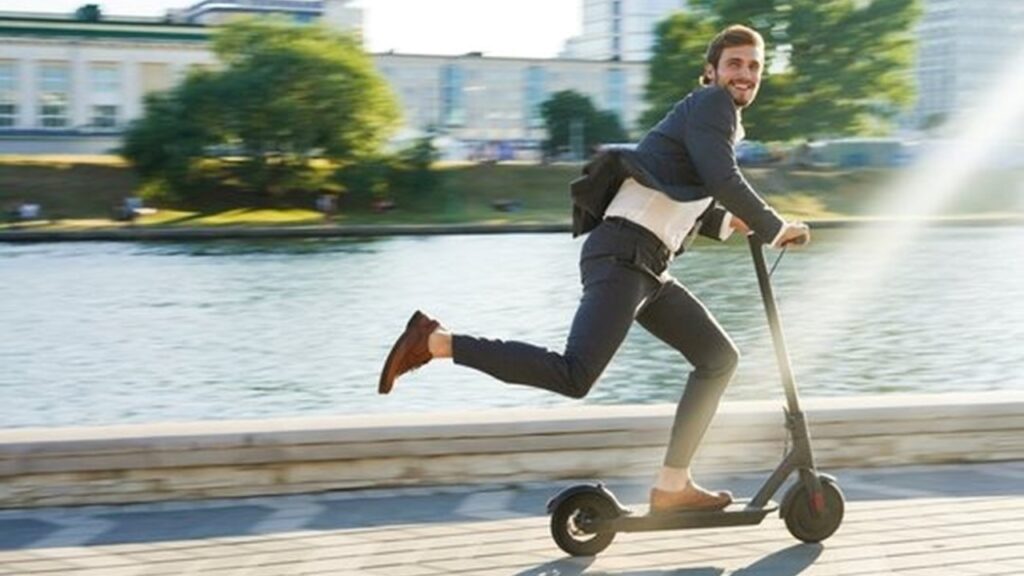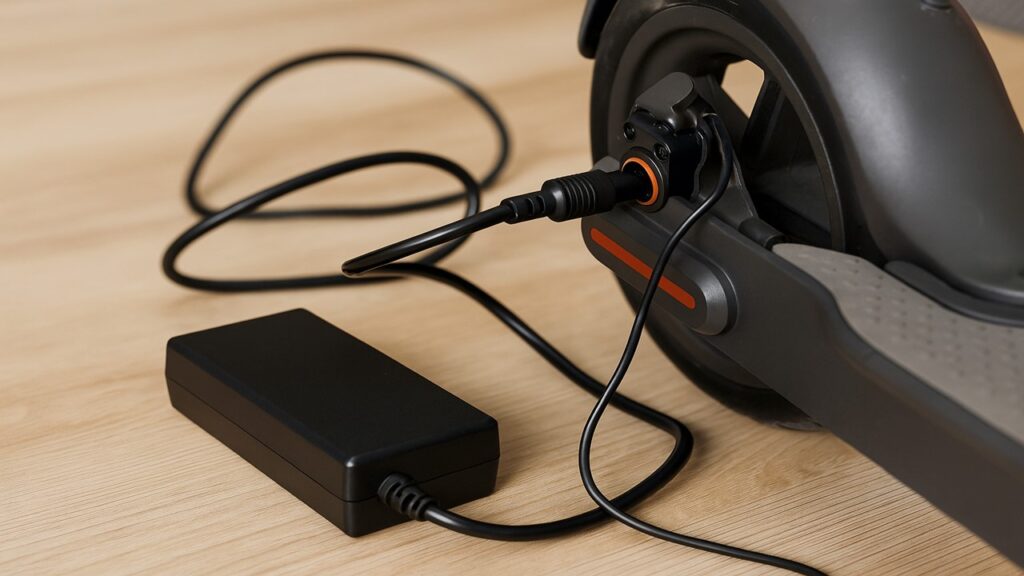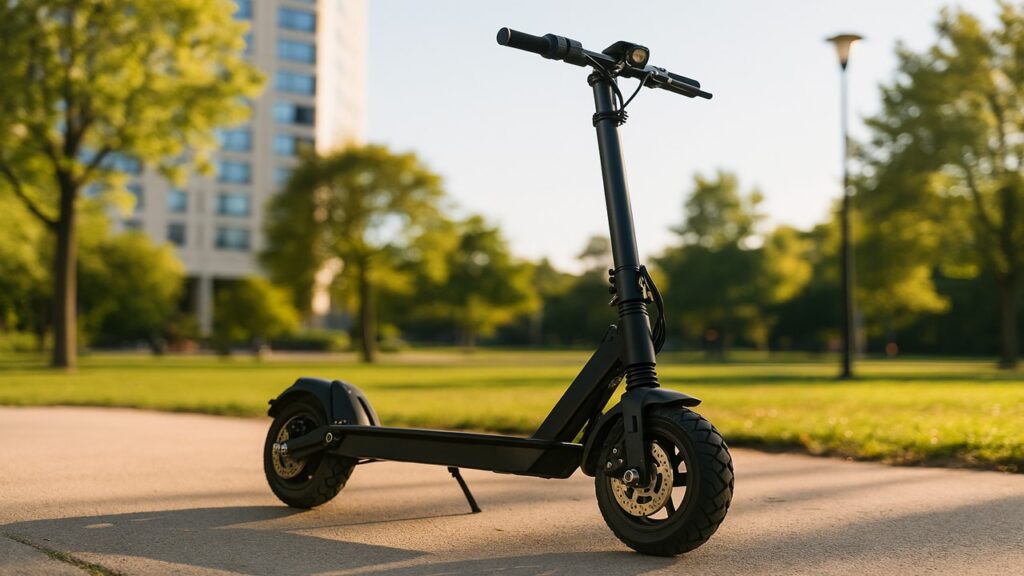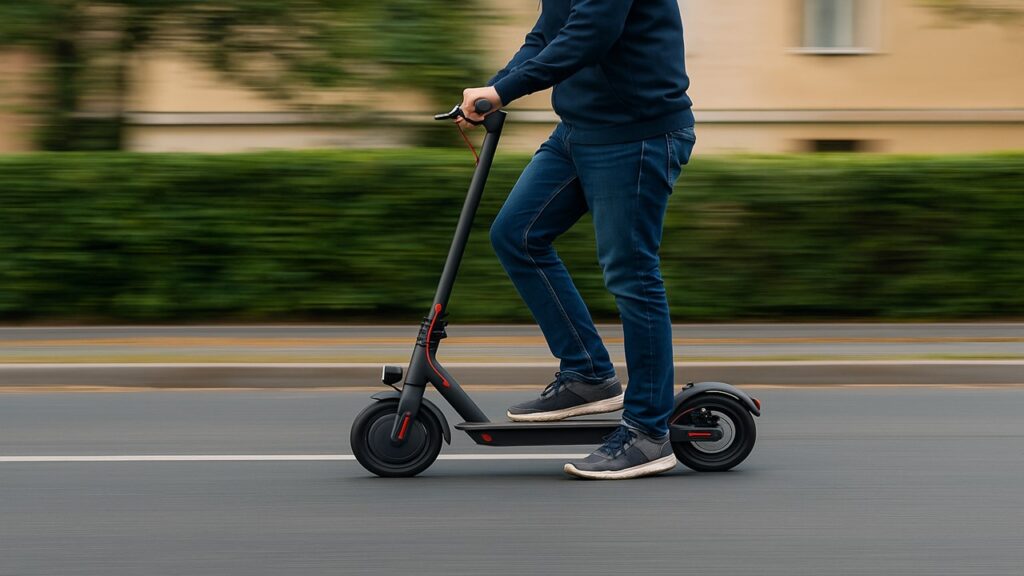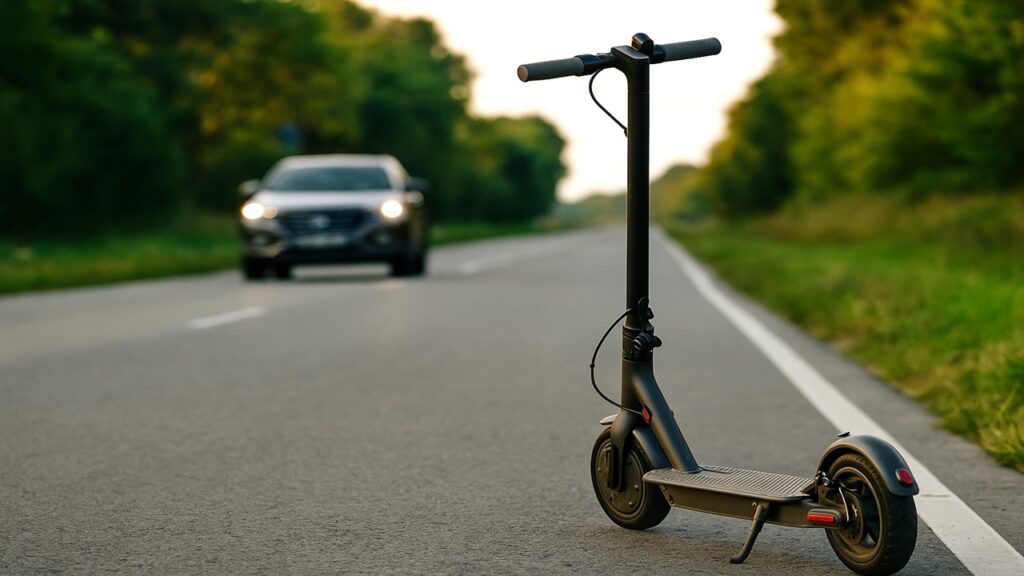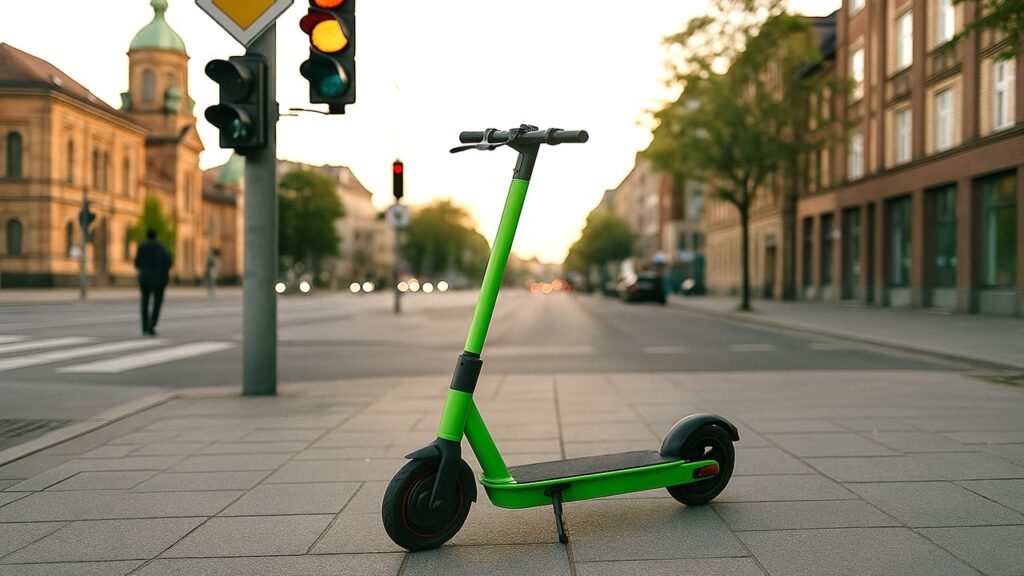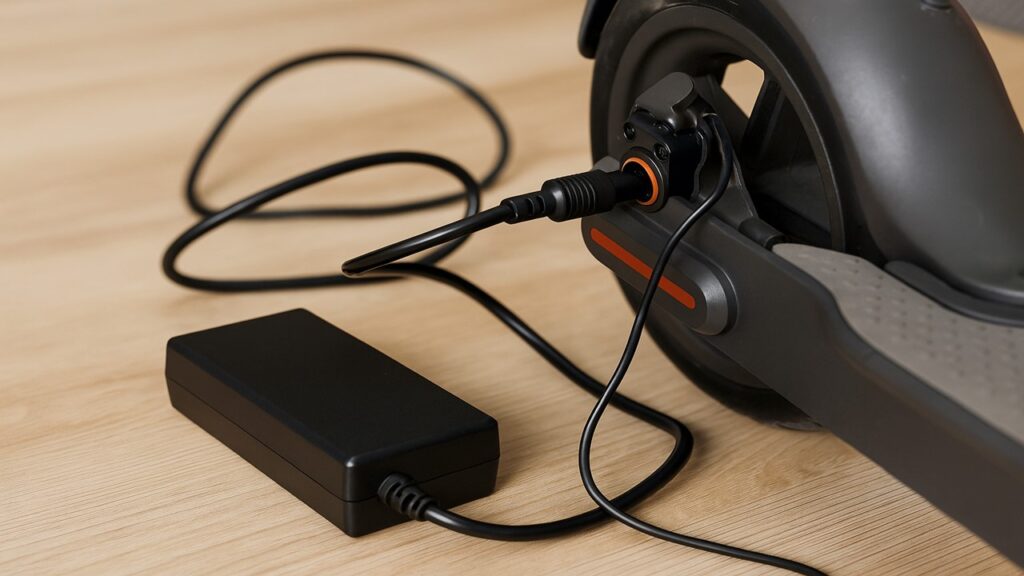
Charging an electric scooter usually takes between 3 and 8 hours, depending on the battery size, charger power, and scooter model. Smaller commuter scooters often charge faster, while high-performance models with larger batteries may take longer unless paired with a fast charger.
Key Summary:
- Most commuter scooters require 3–6 hours of charging, while large performance models can take 8–12+ hours.
- Battery capacity directly impacts charging time — for example, a 250Wh scooter may charge in 3 hours, while a 1000Wh pack can take 10 hours.
- Fast chargers can cut charging duration nearly in half, but only when approved by the manufacturer.
- Charging costs remain very low — usually $0.05–$0.30 per full charge, or about $2–$7 per month for daily commuters.
What Is the Average Charging Time for Electric Scooters?
Most electric scooters fall within a 3 to 8-hour charging window, though actual times vary by category. Smaller batteries charge more quickly, while larger packs require longer charging cycles.
Typical charging times by scooter type:
- Lightweight scooters (250–350 Wh): 2–4 hours
- Mid-range commuter scooters (400–700 Wh): 4–7 hours
- High-performance scooters (1000–3000 Wh): 8–12+ hours (4–6 with fast charging)
Comparison Table: Charging Time by Scooter Type
| Scooter Type | Battery Size (Wh) | Standard Charger Time | With Fast Charger |
| Lightweight commuter | 250–350 Wh | 2–4 hours | 1–2 hours |
| Mid-range commuter | 400–700 Wh | 4–7 hours | 2–4 hours |
| High-performance | 1000–3000 Wh | 8–12+ hours | 4–6 hours |
This table shows at a glance how battery capacity and charger type influence real-world charging time.
Factors That Affect Charging Time
Several technical and environmental variables influence how long it takes to charge an electric scooter.
Key factors include:
- Battery capacity: larger batteries require more charging time.
- Battery type: lithium-ion charges faster than lead-acid.
- Charger power: higher output reduces charging duration.
- Charging curve: batteries charge quickly at first, then slow near full capacity.
- Scooter model: each brand designs its charging system differently.
- External conditions: temperature, battery age, and first-time charging can all add time.
Each of these deserves a closer look, so let’s break them down in detail.
Battery Capacity
Battery capacity is one of the main factors that determines how long a scooter takes to charge. The higher the capacity, the more energy the battery can store, which means more time is needed to fully recharge it.
For example, a compact scooter with a 250Wh battery can usually be charged in about 3 hours. On the other hand, a large 1000Wh battery may require close to 10 hours with the same charger. This difference shows why commuters with smaller scooters often find charging quick and convenient, while riders of high-performance models need to plan around longer cycles.
Battery Type
Not all scooter batteries are built the same. The type of battery chemistry plays a big role in charging speed and efficiency.
- Lithium-ion batteries are the standard in modern scooters. They charge quickly, maintain about 90–95% efficiency, and handle many charge cycles without losing much capacity.
- Lead-acid batteries are older technology, often found in budget or outdated models. They are slower to charge, less efficient at around 80–85%, and tend to wear out sooner.
For anyone choosing a scooter today, lithium-ion is the clear winner in both performance and charging convenience.
Charger Power Output
The charger itself is just as important as the battery. A higher-output charger can significantly reduce charging time, provided the scooter is designed to handle it.
Think of it like filling a tank with water. A small hose will take longer, while a wider hose can get the job done much faster. A 2A charger, for example, may take twice as long to top up a scooter as a 4A charger would with the same battery.
Charging Curve & Efficiency
Scooters don’t charge at a constant speed from start to finish. Most models charge rapidly during the first half, then slow down as they approach full capacity. This is known as the charging curve.
The reason for this slowdown is the Battery Management System (BMS). It gradually reduces power input to protect the battery from overheating or overcharging. That’s why the final 20% often takes almost as long as the first 50%.
While it can be tempting to wait for a full 100% charge, many riders choose to unplug at around 80–90% to save time and preserve long-term battery health.
Scooter Brand & Model Examples
Different scooters vary widely in how long they take to charge. Looking at real-world models helps put these numbers into perspective:
- Segway Ninebot Max – Equipped with a 551Wh battery, it typically takes about 6 hours to charge.
- Unagi Voyager – With a 360Wh battery and a more powerful 126W charger, it reaches full charge in around 3 hours.
- Dualtron Storm – A heavy-duty scooter with a massive 3000Wh battery that takes about 10 hours with a standard charger, or closer to 5 hours when using dual fast chargers.
These examples highlight how battery size and charger power interact differently across scooter categories.
Environmental & Battery Health Factors
The environment and condition of the battery also play a significant role in charging time. Charging in very cold or hot weather reduces efficiency, which means the battery will take longer to reach full capacity.
Battery age is another factor. As a battery gets older, its ability to store and accept energy declines, which not only reduces range but can also extend charging times.
Finally, the first full charge is usually the longest, often requiring 8–12 hours. This helps balance the cells in a new battery and ensures more consistent performance in the long run.
How to Calculate Charging Time
The time it takes to charge an electric scooter can be estimated with simple formulas. The most common method uses watt-hours (Wh) and the charger’s wattage (W). The formula is:
Charging Time (hours) = Battery Capacity (Wh) ÷ Charger Power (W) ÷ Efficiency
For example, a 300Wh battery with a 75W charger at 90% efficiency will take roughly 4.4 hours to charge. The efficiency factor matters because not all power entering the battery is stored — some is lost as heat.
Another method uses amp-hours (Ah) and charger current (A). The formula is:
Charging Time (hours) = Battery Capacity (Ah) ÷ Charger Output (A) ÷ Efficiency
If a scooter has a 10Ah battery and a 2.5A charger at 90% efficiency, it will take about 4.4 hours as well. Both methods give a close estimate, but actual times can vary slightly due to temperature, age of the battery, and the scooter’s built-in charging controls.
Range Per Hour of Charging
Scooter batteries don’t just store electricity — they translate charging time into usable range. On average, one hour of charging gives enough power for short commutes or top-ups.
- Lightweight commuter scooters: ~6–10 miles per hour of charging
- Mid-range scooters: ~5–8 miles per hour of charging
- High-performance scooters: ~3–6 miles per hour of charging
This shows why smaller scooters feel quicker to recharge. Riders who rely on long-range models may need to plan overnight charging or invest in fast chargers.
How Much Does It Cost to Charge an Electric Scooter?
One advantage of electric scooters is that they are extremely cheap to charge compared to cars or motorcycles. The cost depends on battery size and local electricity rates, but in most cases, a full charge costs less than running a coffee maker for an hour.
For example, a 500Wh battery charged at an average U.S. electricity cost of $0.15 per kWh would cost just about 7.5 cents per full charge. Even large 2kWh batteries only cost around 30 cents to charge. In countries with higher electricity rates, the cost is still a fraction of what you’d spend on fuel.
On a monthly basis, daily commuters usually spend between $2 and $7 per month on charging, depending on scooter size and frequency of use. That makes scooters not only environmentally friendly but also one of the most affordable forms of personal transport.
How to Reduce Charging Time Safely
If you want faster charging without harming your battery, the safest method is to use a manufacturer-approved fast charger. Many scooters support higher-wattage chargers that can cut charging time nearly in half, but compatibility is critical. Using the wrong charger may overheat the battery or shorten its life.
Some high-performance models also include dual charging ports, allowing you to connect two chargers at once. This can significantly reduce downtime, but again, it should only be done if the scooter is designed for it. In addition, keeping your battery above 20 percent and charging only up to 80–90 percent can make top-ups faster while extending long-term health.
Safe Charging Practices for Battery Longevity
Charging your scooter properly not only saves time but also extends the life of the battery. Following a few simple practices helps avoid unnecessary wear.
Best practices include:
- Always use the original charger or a certified replacement.
- Charge in a moderate temperature range (ideally 15–30°C).
- Let the scooter cool down after a long ride before plugging it in.
- Avoid leaving the scooter plugged in for days at a time.
- If storing long-term, keep the battery at 20–80% charge.
These habits protect the battery chemistry and reduce the risk of sudden performance drops over time.
Common Charging Mistakes to Avoid
Even experienced riders sometimes make charging mistakes that reduce battery efficiency or lifespan. Recognizing them early helps you avoid costly damage.
Mistakes to watch out for:
- Using random or cheap chargers that are not voltage-matched.
- Relying only on fast charging, which increases heat and stress.
- Fully draining the battery before every charge.
- Charging immediately after a long ride when the battery is still hot.
- Leaving the scooter plugged in indefinitely, even with a built-in BMS.
By avoiding these errors, you ensure safer charging and longer-lasting performance from your scooter’s battery.
Future of Electric Scooter Charging
The future of scooter charging is moving toward faster and more convenient solutions. Many manufacturers are already introducing fast-charging systems that can deliver 50 percent capacity in under 30 minutes. This is particularly useful for delivery riders or commuters who need quick top-ups during the day.
Another emerging trend is battery swapping networks, where riders can exchange a depleted battery for a fully charged one at dedicated stations. Companies in Asia and Europe are piloting these systems, and they could dramatically reduce downtime by eliminating the need to wait for charging.
Alongside this, smart chargers with AI-based management are being developed to optimize charging speed while protecting battery health. These advancements suggest that charging will soon be as seamless as refueling at a gas station.
Final Thoughts
Charging an electric scooter typically takes between 3 and 8 hours, though the actual time depends on battery size, charger power, and the scooter model. Smaller commuter scooters charge quickly, while large high-performance models may require overnight charging unless paired with a fast charger.
By understanding the key factors—battery capacity, charger output, efficiency, and environmental conditions—you can better plan your rides and extend the life of your battery. Following safe charging practices, avoiding common mistakes, and keeping an eye on new technologies like fast charging and battery swapping will ensure that your scooter stays reliable for years to come.
FAQs
How long does it take to charge an electric scooter?
Most scooters take 3–8 hours, but smaller models may finish in 2–4 hours, while high-performance scooters can take 10+ hours.
Can I leave my scooter charging overnight?
Yes, most scooters have a Battery Management System that prevents overcharging, but unplugging after full is better for long-term health.
Does fast charging damage the battery?
No, if the charger is manufacturer-approved. However, frequent fast charging generates more heat and can shorten lifespan slightly.
How much does it cost to charge a scooter?
Usually between $0.05 and $0.30 per full charge, depending on battery size and local electricity rates.
How do I know when my scooter is fully charged?
Most chargers use LED indicators: red means charging is in progress, green means the battery is full.

At our core, we’re a group of passionate scooter enthusiasts. We dive deep into the world of tech, especially when it’s about your everyday usable scooters to make riding convinient. We try to provide as much value to the readers with our information and how to blog articles as possible. We take great satisfaction in offering unbiased evaluations, ensuring that you can make informed decisions when investing in your desired scooters and riding equipments.




